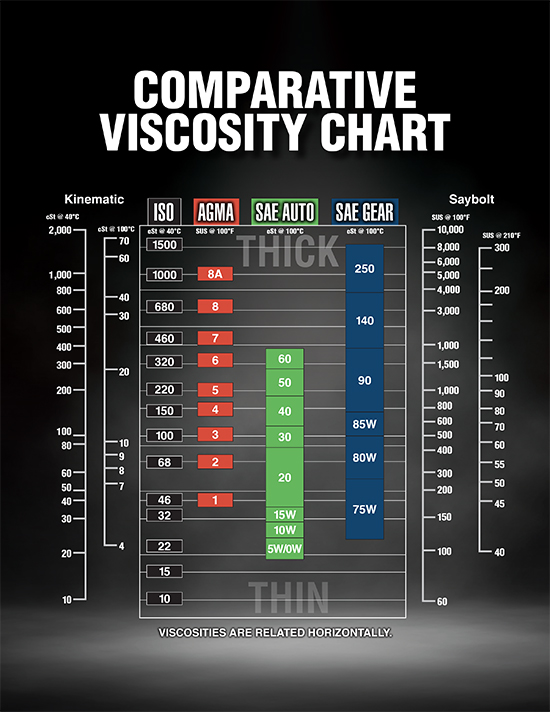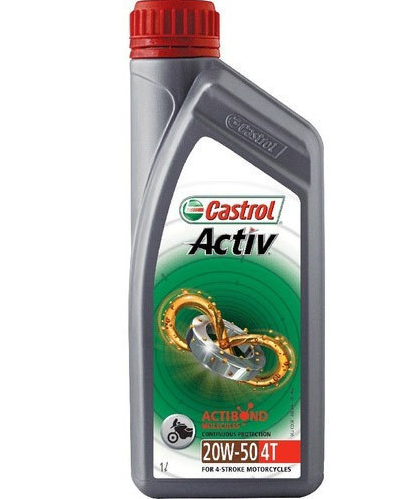Choosing the right engine oil is crucial for maintaining your vehicle’s performance and longevity. One key factor to consider is the viscosity of the oil, which determines its flow and thickness. To help you make an informed decision, let’s delve into the world of engine oil viscosity with the help of an engine oil viscosity chart.

Credit: blog.amsoil.com
What is Engine Oil Viscosity?
Engine oil viscosity refers to the oil’s resistance to flow. It is indicated by numbers such as 5W-30 or 15W-50, where the first number denotes the oil’s viscosity at cold temperatures and the second number indicates its viscosity at operating temperatures.
How is Viscosity Measured?
Viscosity is determined by measuring the time it takes for a fixed volume of fluid to flow through a viscometer under controlled conditions.
Exploring Viscosity Tables
Viscosity tables present a compiled list of viscosities for various materials. These tables offer insights into the flow properties of different fluids.
Examples Of Viscosity Tables
| Material | Viscosity (cP) |
|---|---|
| Engine Oil | 50 |
| Water | 1 |
| Honey | 2000 |
What Do the Numbers Mean for Oil Viscosity?
Oil viscosity numbers represent the thickness or resistance to flow of the oil at different temperatures. The viscosity of oil is crucial for ensuring proper lubrication and protection of engine components. Here’s what the numbers in oil viscosity grades mean:
-
The “W” Number (Winter):
- The “W” stands for winter and indicates the oil’s viscosity at low temperatures, typically 0°F (-17.8°C).
- Lower W numbers denote lower viscosity and better flowability at cold temperatures.
- For example, 0W and 5W oils are thinner and flow better in cold conditions compared to 10W or 15W oils.
-
The Second Number:
- The second number in the viscosity grade (e.g., 40 in 10W-40) represents the oil’s viscosity at high temperatures, typically 212°F (100°C).
- Higher second numbers denote higher viscosity and better oil film thickness at high temperatures.
- For example, 10W-40 oil is thicker at high temperatures compared to 5W-30 oil.
In summary, lower W numbers indicate better cold-start performance, while higher second numbers provide better protection at high temperatures. It’s essential to select the right viscosity oil based on your engine’s requirements, climate conditions, and manufacturer recommendations to ensure optimal performance and engine longevity.
What Oil Viscosity Should You Use?
The choice of oil viscosity depends on several factors, including the engine design, operating conditions, and manufacturer recommendations. Here are some general guidelines to help you determine the appropriate oil viscosity for your engine:
-
Consult the Owner’s Manual: The best way to determine the right oil viscosity for your engine is to check the owner’s manual. The manufacturer typically specifies the recommended viscosity grade based on the engine design and operating conditions.
-
Consider Climate Conditions:
- For cold climates: Choose a lower W number (e.g., 0W, 5W) for better cold-start performance.
- For hot climates: Consider a higher viscosity oil to ensure adequate protection at high temperatures.
-
Engine Age and Condition:
- Older engines or engines with high mileage may benefit from slightly higher viscosity oils to maintain oil pressure and reduce wear.
- Newer engines with tighter tolerances may require lower viscosity oils for better fuel efficiency and performance.
-
Operating Conditions:
- For severe driving conditions (e.g., towing, hauling heavy loads, frequent stop-and-go driving), consider using a higher viscosity oil for added protection.
- Light-duty driving in normal conditions may be fine with the manufacturer-recommended viscosity grade.
-
Follow Manufacturer Recommendations:
- It’s crucial to follow the manufacturer’s recommendations for oil viscosity to ensure proper lubrication and engine performance.
- Using the wrong viscosity oil can lead to engine damage, reduced fuel efficiency, and poor performance.
In summary, the choice of oil viscosity should be based on a combination of factors, including climate, engine age, operating conditions, and manufacturer guidelines. When in doubt, always refer to the owner’s manual or consult with a professional mechanic to select the right oil viscosity for your engine.
Engine Oil Viscosity Chart
An engine oil viscosity chart provides a comprehensive overview of different oil grades and their recommended applications. Here’s a simplified chart highlighting common viscosity grades:
| Viscosity Grade | Temperature Range |
|---|---|
| 5W-30 | -20°C to 40°C |
| 15W-50 | 0°C to 40°C |
| 20W-50 | 10°C to 50°C |

Credit: www.machinerylubrication.com
How to Read an Engine Oil Viscosity Chart
When consulting an engine oil viscosity chart, consider factors like temperature, driving conditions, and manufacturer recommendations. These charts provide valuable insights into selecting the right oil for your vehicle.
Understanding Viscosity Index
The Viscosity Index (VI) of oil indicates its resistance to change in viscosity over a temperature range. A higher VI number suggests that the oil maintains its viscosity more effectively across varying temperatures.
Engine Oil Viscosity Tables: Measurement Data Simplified
Certainly! Here’s a summary of the viscosity measurement data for various SAE grades of engine oil:
SAE 15W-40 Engine Oil:
- At 0°C: Dynamic Viscosity is 1328.0 mPa.s, Kinematic Viscosity is 1489.4 mm²/s, and Density is 0.8916 g/cm³.
- At 100°C: Dynamic Viscosity is 14.588 mPa.s, Kinematic Viscosity is 17.467 mm²/s, and Density is 0.8352 g/cm³.
SAE 10W-40 Engine Oil:
- At 0°C: Dynamic Viscosity is 735.42 mPa.s, Kinematic Viscosity is 839.76 mm²/s, and Density is 0.8758 g/cm³.
- At 100°C: Dynamic Viscosity is 15.093 mPa.s, Kinematic Viscosity is 18.424 mm²/s, and Density is 0.8192 g/cm³.
SAE 10W-60 Engine Oil:
- At 0°C: Dynamic Viscosity is 1453.8 mPa.s, Kinematic Viscosity is 1684.4 mm²/s, and Density is 0.8631 g/cm³.
- At 100°C: Dynamic Viscosity is 24.310 mPa.s, Kinematic Viscosity is 30.129 mm²/s, and Density is 0.8069 g/cm³.
SAE 5W-40 Engine Oil:
- At 0°C: Dynamic Viscosity is 753.52 mPa.s, Kinematic Viscosity is 868.78 mm²/s, and Density is 0.8674 g/cm³.
- At 100°C: Dynamic Viscosity is 14.742 mPa.s, Kinematic Viscosity is 18.185 mm²/s, and Density is 0.8106 g/cm³.
SAE 0W-30 Engine Oil:
- At 0°C: Dynamic Viscosity is 474.65 mPa.s, Kinematic Viscosity is 550.23 mm²/s, and Density is 0.8626 g/cm³.
- At 100°C: Dynamic Viscosity is 11.734 mPa.s, Kinematic Viscosity is 14.572 mm²/s, and Density is 0.8053 g/cm³.
These values are indicative of how the viscosity of engine oil changes with temperature. For more detailed information and additional SAE grades, you can visit the Anton Paar Wiki page on Engine Oil. Remember, the right viscosity is crucial for ensuring the proper lubrication and protection of engine components. Always refer to your vehicle’s manual for the recommended oil viscosity.
Frequently Asked Questions on Engine Oil Viscosity Chart: Comprehensive Guide
Is 5w30 Thicker Than 10w30 Oil?
No, 5W30 oil is not thicker than 10W30 oil. The numbers represent the oil’s viscosity, with the lower number indicating how easily it flows at low temperatures. In this case, 5W30 flows more easily than 10W30 in colder conditions. Both oils have similar thickness at higher temperatures.
Which Engine Oil Viscosity Is Best?
The best engine oil viscosity depends on your vehicle and the operating conditions. Consult your vehicle’s manual or a professional for the most suitable option.
Which Is Thicker 10w30 or 10w40?
10w40 is thicker than 10w30, offering better protection at high temperatures.
Conclusion
Engine oil viscosity plays a crucial role in ensuring the optimal functioning of your vehicle’s engine. By referring to an engine oil viscosity chart and understanding the significance of viscosity grades, you can make well-informed decisions when selecting the right oil for your vehicle.


